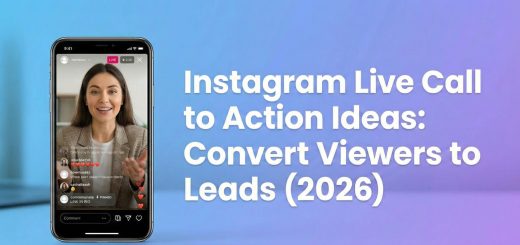Guide to activity in social media: tips and tricks

In today’s world, presence in virtual space and effective activity in social networks is of great importance for every person and business. Mastering the right techniques and strategies can help improve the quality of content, increase engagement with audiences, and improve brand awareness. Each of the different platforms such as Instagram, LinkedIn and Twitter have their own characteristics that are essential to understand in order to create targeted and effective approaches. Among the key elements in this way are optimizing content to attract more audience, using data analytics to make informed decisions and avoiding common mistakes that may hinder growth. Employing tools related to SEO, content marketing, and advertising can also dramatically increase your online presence and revenue potential. By following these tips and techniques, people and businesses can gain a strong position in the competitive field of social networks.
1. Mastering Social Media Engagement Techniques
Mastering social media engagement techniques requires a strategic and nuanced approach that emphasizes meaningful interactions and the cultivation of a loyal community. Here are key strategies that can significantly enhance your social media engagement efforts.
Content Diversification
To capture and maintain the attention of your audience, it is essential to diversify your content. Incorporating a mix of formats can cater to varied preferences, ensuring that your content remains engaging and dynamic. Consider the following:
- Visuals: Use eye-catching images and graphics to draw attention.
- Videos: Share informative or entertaining videos that resonate with your audience.
- Polls and Interactive Posts: Engage users by asking for their opinions or encouraging participation.
Moreover, repurposing content across different platforms allows you to maximize your reach without the need for extensive new content creation.
Value-Driven Content
Prioritizing quality over quantity is crucial. Aim to provide insights and entertainment that genuinely resonate with your audience. By delivering valuable content, you foster deeper connections that can transform casual followers into loyal supporters. This can be achieved through:
- Informative articles that solve problems.
- Entertaining stories or anecdotes.
Your ultimate goal should be to create content that not only engages but also enriches your community.
Two-Way Communication
Building engagement is not a one-sided affair; it requires active participation from both parties. Show your audience that their opinions matter by:
- Responding promptly to comments and messages.
- Asking open-ended questions to foster discussion.
- Hosting contests or giveaways to encourage interaction.
This approach not only increases engagement but also reinforces the bond between your brand and its followers.
Community Building
Instead of simply focusing on follower accumulation, aim to cultivate a vibrant community. Encourage user-generated content by inviting your audience to share their stories and experiences related to your brand. This can be achieved through:
- Highlighting user testimonials.
- Sharing user stories on your platforms.
Such practices foster trust and create a sense of belonging among your audience, making them feel integral to your brand.
Personalization
Personalizing your content can significantly enhance its relevance. Utilize audience insights to tailor your posts to specific demographics and interests. Strategies may include:
- Creating targeted campaigns for different audience segments.
- Using language and visuals that resonate with specific groups.
This level of customization ensures that your messaging feels relevant and engaging to all audience members.
Platform-Specific Strategies
Recognizing that each social media platform has its distinct characteristics is crucial for effective engagement. Tailor your strategies accordingly:
- Facebook: Ideal for in-depth discussions and community building.
- Instagram: Focus on high-quality images and visual storytelling.
- Twitter: Utilize for real-time engagement and updates.
- YouTube: Perfect for longer storytelling formats.
By understanding and leveraging the unique attributes of each platform, you can enhance your engagement efforts significantly.
Leverage AI Tools
Integrating artificial intelligence into your social media strategy can streamline processes and improve efficiency. Consider leveraging AI tools for:
- Generating engaging captions.
- Analyzing audience behavior for better targeting.
- Identifying trending hashtags to increase visibility.
These tools can help you save time and enhance your overall engagement strategy.
Monitor Engagement Metrics
Regular analysis of engagement metrics is vital for understanding the effectiveness of your strategies. By tracking performance data, you can identify what resonates with your audience and what doesn’t. Adjust your tactics accordingly to continuously improve engagement rates.
Experimentation and Adaptation
The social media landscape is constantly evolving, making it essential to remain adaptable. Embrace experimentation by:
- Trying different content types and formats.
- Testing various posting times to optimize reach.
- Analyzing results and adapting your strategies based on what works best.
Staying flexible and responsive to changes will help you maintain relevance and effectiveness in your engagement efforts.

By implementing these comprehensive strategies, you can enhance your social media engagement significantly, fostering a vibrant and interactive community that supports your brand’s growth and success.
2. Strategies for Content Optimization Success
Successful content optimization is rooted in a variety of strategies designed to enhance user engagement and improve search engine performance. By focusing on the quality and relevance of your content, you can create a more effective online presence that resonates with your target audience.
Focus on User Experience
Creating an optimal user experience is paramount for content success. Content should be crafted with the reader in mind, ensuring it is both informative and engaging. Here are some key elements to consider:
- Structure and Navigation: Utilize clear headings and subheadings to break content into digestible sections. This not only aids readability but also helps search engines understand your content’s hierarchy.
- Visual Elements: Incorporate visuals such as images, infographics, and videos to enhance the user experience. These elements can capture attention, keep readers on the page longer, and encourage social sharing.
- Relevance and Clarity: Ensure that your content addresses the needs and questions of your audience effectively. A well-organized layout contributes to a seamless reading experience.
Leverage Keyword Research and Semantics
Effective keyword research serves as the backbone of content optimization. Identifying the right keywords allows you to align your content with what your audience is searching for. Consider the following approaches:
- Identify Relevant Keywords: Use keyword research tools to uncover both primary and secondary keywords that have the potential to drive traffic to your content.
- Embrace Semantic Variations: Incorporate related terms and phrases that enrich the context of your main topics. This not only enhances your content’s relevance but also improves its chances of ranking higher on search engine results pages.
- Depth and Authority: Cover topics comprehensively and address related questions that may arise. This positions you as an authority in your niche, attracting organic traffic and backlinks.
Create Compelling and Original Content
To stand out in a crowded digital landscape, your content must be both unique and engaging. Here are some strategies to achieve this:
- Original Perspectives: Strive to present new ideas or viewpoints that differentiate your content from competitors. Originality captures the audience’s attention and encourages sharing.
- Storytelling Techniques: Integrate storytelling into your content to make it more relatable. Personal narratives or case studies can evoke emotional responses, fostering a deeper connection with readers.
- Encourage Social Engagement: Engaging content not only captivates readers but also motivates them to share your work, thereby increasing visibility and reach.
Optimize for Conversions
Every piece of content should have a clear purpose, particularly when it comes to conversions. Here’s how to optimize your content for this goal:
- Compelling Calls to Action: Ensure that each piece of content contains a clear and persuasive call to action (CTA). Whether it’s to subscribe, download, or purchase, CTAs should be strategically placed for maximum impact.
- Target Audience Segmentation: Tailor your content to resonate with specific audience segments. Use language that speaks directly to their needs and desires to improve conversion rates.
- Formatting for Clarity: Use formatting techniques such as bullet points and subheadings to highlight key information, making it easier for readers to digest and respond to your content.
Regularly Update and Audit Content
Content optimization is not a one-time endeavor but an ongoing process that requires regular attention. Here are some steps to maintain your content’s effectiveness:
- Conduct Content Audits: Regularly review your existing content to identify pieces that may be underperforming. This allows you to make necessary adjustments and improvements.
- Stay Current: Update your content to reflect the latest trends, insights, and audience behavior changes. This ensures your content remains relevant and competitive.
- Enhance Search Engine Rankings: By refining and updating your content, you can maintain or improve your rankings on search engines, ensuring continued visibility.

By implementing these comprehensive strategies for content optimization, you can significantly enhance user engagement, visibility, and conversion rates, ultimately leading to greater success in your online endeavors.
3. Enhancing Brand Visibility Online
In today’s digital age, having a strong online presence is crucial for brands looking to thrive. With countless messages vying for consumer attention, enhancing brand visibility online has become a strategic necessity. Below are key approaches that brands can implement to effectively increase their online visibility.
Utilizing Social Media
Social media platforms serve as dynamic arenas for brands to elevate their visibility. To harness the full potential of these platforms, brands should focus on:
- Engaging Content: Create content that resonates with your audience, whether through compelling visuals, videos, or interactive posts.
- Community Building: Foster genuine interactions by responding to comments and messages promptly, which helps cultivate a loyal community.
- Regular Updates: Consistency is key. Regularly sharing content keeps your brand top-of-mind for followers.
- Utilizing Features: Take advantage of platform-specific features like stories, reels, or live sessions to create more engaging experiences.
Search Engine Optimization (SEO)
To be found online, brands must invest in SEO strategies. Mastering SEO involves:
- Keyword Optimization: Research and incorporate relevant keywords into your website content to enhance discoverability.
- Improving Site Performance: Ensure your website loads quickly and is optimized for mobile users, as these factors significantly impact user experience.
- Quality Content: Regularly updating high-quality content not only aids in SEO but also keeps users engaged.
Influencer Marketing
Partnering with influencers can significantly amplify a brand’s reach. Consider the following:
- Target Audience Alignment: Collaborate with influencers whose audience aligns with your target demographics for maximum impact.
- Authenticity: Seek influencers who genuinely believe in your brand, as their authentic endorsements can build trust and credibility.
Content Creation
High-quality content remains at the heart of online visibility. Brands should focus on:
- Diverse Formats: Create a variety of content types, including articles, blogs, infographics, and videos, to cater to different audience preferences.
- Valuable Insights: Ensure that the content you produce provides genuine value, helping to establish your brand as an authority in your field.
- Regular Updates: Consistently refresh your content to keep your audience engaged and improve SEO performance.
Email Marketing
Email marketing remains a direct and effective way to maintain brand visibility. Key strategies include:
- Personalization: Tailor your emails based on subscriber preferences to enhance engagement and relevance.
- Regular Newsletters: Keep your audience informed about new products, promotions, and company updates through regular communications.
Customer Reviews and Testimonials
Positive customer feedback can serve as powerful endorsements for your brand. To leverage this:
- Encourage Reviews: Prompt satisfied customers to leave positive reviews to enhance your brand’s credibility.
- Engage with Feedback: Monitor and respond to reviews, both positive and negative, to build trust and foster customer relationships.
Participating in Online Communities
Engaging in relevant online forums and communities can organically enhance brand visibility. Strategies to consider include:
- Providing Value: Share your expertise and insights in discussions to position your brand as a thought leader.
- Networking: Build relationships with community members to increase awareness of your brand and offerings.
Leveraging Analytics
Utilizing analytics tools is essential for measuring the effectiveness of your strategies. Brands should:
- Track Performance: Monitor key metrics to understand what strategies are working and where improvements are needed.
- Refine Tactics: Analyze user behavior data to adjust your approach and enhance overall visibility.
In conclusion, enhancing brand visibility online requires a comprehensive and multifaceted approach. By effectively leveraging social media, optimizing for search engines, collaborating with influencers, and creating valuable content, brands can significantly increase their online presence. Additionally, engaging in email marketing, encouraging customer reviews, participating in online communities, and utilizing analytics are vital components of a successful visibility strategy. Consistent implementation of these tactics will ultimately lead to attracting a broader audience and driving growth.
4. Avoiding Common Social Media Mistakes
In the fast-evolving landscape of social media, avoiding common pitfalls is crucial for marketers aiming to build a strong online presence. Below are essential strategies that can help in steering clear of frequent mistakes and enhancing overall effectiveness.
Develop a Comprehensive Social Media Strategy
The foundation of successful social media marketing lies in a well-crafted strategy. Begin by clearly defining your objectives—whether it’s increasing brand awareness, generating leads, or fostering customer loyalty. Establish specific goals, identify your target audience, and determine the types of content that will resonate with them. Moreover, outline performance metrics to evaluate the success of your efforts. Treat this plan with the same regard as other marketing strategies to ensure all social media actions align with your business objectives.
Optimize Posting Frequency
Finding the right posting frequency is essential to maintaining audience engagement. Overposting can lead to audience fatigue, while underposting might cause your brand to be overlooked. Research the optimal posting rates for each platform; for instance, LinkedIn may benefit from daily updates, while Instagram could thrive with a few posts each week. Customizing your posting schedule according to platform dynamics can significantly enhance user interaction.
Define Your Target Audience
Understanding your target audience is paramount. Take the time to analyze their preferences, behaviors, and interests. This knowledge allows you to create tailored content that speaks directly to those most likely to engage with your brand. A well-defined audience not only increases engagement but also improves conversion rates, as your messaging will be more relevant and appealing.
Encourage Engagement and Conversation
Merely posting content is not enough; fostering interaction is key. Create posts that encourage comments and discussions. Responding promptly to user inquiries and feedback cultivates a sense of community around your brand. This two-way communication not only enhances brand perception but also builds customer loyalty and trust.
Acknowledge Mentions and Feedback
Monitoring your mentions on social media is crucial. When users mention your brand, take the time to engage with them. Acknowledging customer feedback—both positive and negative—demonstrates that you value their opinions and are committed to improving your offerings. This engagement strengthens relationships and can positively influence public perception of your brand.
Limit Dependency on Automation
While automation tools can save time, relying too heavily on them may lead to impersonal interactions. Strive to maintain a human touch in your communications, ensuring that your audience feels a genuine connection with your brand. Personal responses and authentic interactions can significantly enhance user experience and engagement.
Promote Authentically
Excessive self-promotion can alienate your audience. Instead of focusing solely on promoting products or services, aim to provide valuable and relevant content. Share insights, tips, and resources that resonate with your audience’s needs and interests. This approach not only keeps followers engaged but also positions your brand as a trusted resource in your industry.
Utilize Analytics for Improvement
Regularly analyzing your social media performance is vital for continuous improvement. Utilize analytics tools to track engagement rates, audience demographics, and content performance. By understanding what works and what doesn’t, you can refine your strategies to better meet your audience’s preferences and adapt to changing trends.
Tailor Content to Each Platform
Every social media platform has its own culture and user expectations. Recognize these nuances and customize your content accordingly. For example, what works on Twitter may not be effective on Instagram. By tailoring your content to fit each platform, you enhance its relevance and increase the likelihood of user engagement.
Maintain Open Communication
When faced with negative comments, it’s important to handle them constructively. Rather than deleting such comments, engage with the criticism in a positive manner. This demonstrates that you are open to feedback and willing to make improvements, which can foster a more favorable brand image in the eyes of your audience.
Diversify Content Formats
To keep your audience engaged, incorporate a variety of content formats. Use a mix of videos, infographics, and written posts to cater to different preferences. Experimenting with various formats allows you to discover what resonates best with your audience, ultimately enhancing engagement.
Steer Clear of Inappropriate Language
Maintaining a professional tone is crucial in social media interactions. Avoid using offensive language or addressing controversial topics that could alienate potential followers. A respectful and professional approach will help in building a positive brand image.
Choose Platforms Wisely
It’s essential to focus your efforts on social media platforms that align with your target audience and business goals. Spreading your resources too thin across multiple platforms can dilute your message and impact. Concentrate on the channels where your audience is most active and engaged.
Experiment with Visual Content
Visual content is a powerful tool for capturing attention. Be open to trying different formats, such as videos or striking graphics, to see what resonates with your audience. Flexibility in your approach can lead to higher engagement rates and better overall performance.
Boost Engaging Posts Strategically
Identify posts that are already performing well and consider boosting them to maximize their reach. Utilize demographic filters to ensure your boosted content reaches the right audience. This strategic approach can optimize your marketing efforts and enhance engagement.
By implementing these strategies, marketers can effectively navigate the complexities of social media, avoiding common mistakes and fostering a stronger, more engaging online presence.
5. Analytics Tools for Informed Marketing Decisions
In the rapidly evolving landscape of digital marketing, making informed decisions is crucial for success. The use of analytics tools can significantly streamline this process by providing insights derived from data across various marketing channels. Below are five powerful analytics tools that can enhance your marketing strategy and decision-making capabilities.
1. DashThis
DashThis is a versatile marketing analytics platform designed for ease of use. It allows users to create personalized dashboards that compile all relevant marketing metrics into a single interface. This tool boasts over 34 integrations with popular digital marketing platforms, making it an efficient solution for data aggregation and analysis. Its user-friendly interface is complemented by a library of templates, which can help newcomers quickly grasp the functionalities of the tool. DashThis is especially advantageous for marketing agencies and small business teams aiming to assess campaign performance without the complexity often associated with data analysis.
2. Google Analytics
As a cornerstone of online marketing analytics, Google Analytics is renowned for its comprehensive capabilities. This platform provides in-depth insights into website traffic, user behavior, and engagement metrics. Marketers can track various key performance indicators, including traffic sources, audience demographics, and user journey flows. Additionally, its seamless integration with numerous other tools enhances its value, allowing marketers to gather critical data that informs strategies to optimize their online presence. The fact that Google Analytics is free to use further democratizes access to this vital resource for businesses of all sizes.
3. SEMRush
Specializing in search engine optimization (SEO) and content marketing, SEMRush equips marketers with essential analytics for improving search rankings and content effectiveness. This tool provides in-depth insights into keyword performance, backlink profiles, and competitive landscape analysis. By leveraging SEMRush, marketers can enhance both organic search strategies and pay-per-click (PPC) campaigns. Its compatibility with tools like Google Analytics and major social media platforms illustrates its versatility, making it a must-have for content marketers and SEO professionals looking to gain a competitive edge.
4. HubSpot Marketing Hub
HubSpot stands out as an all-in-one marketing solution, featuring robust reporting tools that facilitate detailed analysis. Users can create comprehensive dashboards and custom reports that integrate data from both sales and marketing initiatives. With a strong focus on inbound marketing, HubSpot is ideal for businesses striving to streamline their marketing efforts while maintaining a high level of analytics capability. The platform’s extensive app marketplace allows for smooth integration with various business functions, thereby promoting collaboration and efficiency across departments.

5. Tableau
Recognized for its exceptional data visualization capabilities, Tableau is a self-service business intelligence tool that empowers marketing teams to perform deep analyses of their data. It connects with a multitude of data sources, enabling effective visualization of trends and insights critical for strategic decision-making. While Tableau is particularly well-suited for enterprise-level organizations due to its sophisticated analytics features, its flexibility in data management and analysis makes it a valuable asset for any marketing team aiming to leverage data-driven strategies.
By utilizing these analytics tools, marketing teams can vastly improve their decision-making processes. Each platform offers unique strengths that simplify data collection and reporting, allowing marketers to focus on strategic initiatives that yield results. Embracing the capabilities of these tools not only minimizes time spent on manual data handling but also empowers marketers to make informed, real-time decisions that drive success.
conclusion
In conclusion, navigating the complexities of social media requires a multifaceted approach that encompasses engagement techniques, content optimization, brand visibility, and informed decision-making through analytics. By mastering the art of engaging with your audience meaningfully, deploying innovative content strategies, and enhancing your brand’s online presence, you create a solid foundation for sustainable growth. Additionally, being aware of common pitfalls allows you to refine your approach and foster a resilient online community. Ultimately, leveraging analytics tools equips marketers with the insights needed to make data-driven decisions, ensuring that your strategies align with audience preferences and market trends. By implementing these comprehensive tactics, you position your brand for success in the dynamic world of social media, paving the way for increased interaction and lasting loyalty.



